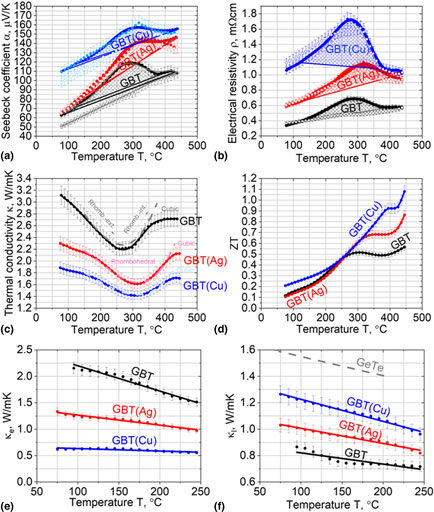Crossref Citations
This article has been cited by the following publications. This list is generated based on data provided by
Crossref.
Yoo, Chung-Yul
Yeon, Changho
Jin, Younghwan
Kim, Yeongseon
Song, Jinseop
Yoon, Hana
Park, Sang Hyun
Beltrán-Pitarch, Braulio
García-Cañadas, Jorge
and
Min, Gao
2019.
Determination of the thermoelectric properties of a skutterudite-based device at practical operating temperatures by impedance spectroscopy.
Applied Energy,
Vol. 251,
Issue. ,
p.
113341.
Dharmaiah, Peyala
Lee, Chul-hee
Song, Gian
and
Hong, Soon-Jik
2020.
Mechanical and thermoelectric properties of environment friendly higher manganese silicide fabricated using water atomization and spark plasma sintering.
Intermetallics,
Vol. 119,
Issue. ,
p.
106705.
Ben-Ayoun, Dana
and
Gelbstein, Yaniv
2021.
Electronic properties of co-doped nonstoichiometric germanium telluride.
Intermetallics,
Vol. 131,
Issue. ,
p.
107118.
Guttmann, Gilad M.
Haroush, Shlomo
and
Gelbstein, Yaniv
2022.
The Mechanical Properties of Inorganic Thermoelectric Materials: A Review on Characterization Methods and Correlations.
ChemNanoMat,
Vol. 8,
Issue. 10,
Guttmann, Gilad Mordechai
Samuha, Shmuel
Gertner, Reuven
Ostraich, Barak
Haroush, Shlomo
and
Gelbstein, Yaniv
2022.
The Thermo-Mechanical Response of GeTe under Compression.
Materials,
Vol. 15,
Issue. 17,
p.
5970.
Huang, Xiege
Deng, Wenying
Zhang, Xiaolian
Morozov, Sergey I.
Li, Guodong
Zhai, Pengcheng
and
Zhang, Qingjie
2022.
Enhancing the shear strength of single-crystalline In4Se3 through point defects.
Scripta Materialia,
Vol. 211,
Issue. ,
p.
114507.
Amiri, Maliheh
Boochani, Arash
and
Nia, Borhan Arghavani
2022.
Thermodynamic, mechanical stabilities and thermoelectric behavior of the XVSi (X = Co, Rh) half-Heuslers.
Indian Journal of Physics,
Vol. 96,
Issue. 4,
p.
1045.
Li, Meng
Shi, Xiao‐Lei
and
Chen, Zhi‐Gang
2024.
Trends in GeTe Thermoelectrics: From Fundamentals to Applications.
Advanced Functional Materials,
Vol. 34,
Issue. 39,
Ren, Guang-Kun
Song, Luping
Liu, Ruopu
Ma, Li
Tian, Yu
Wei, Zhijie
Shi, Yan
Zheng, Zhe
Zhao, Yiying
and
Lin, Yuan-Hua
2025.
Optimizing the endurance mechanisms of chalcogenide-based thermoelectric materials and devices.
Applied Physics Reviews,
Vol. 12,
Issue. 2,
